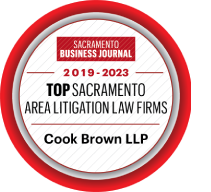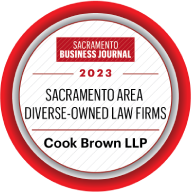Imagine this: a construction employee ultimately on his way to a job site is expected by the employer to first come to the company yard and proceed from there, driving a company truck to transport coworkers and materials to the job site. He is paid only from the time he arrives at the actual job site. But just outside the company yard and still driving his own vehicle, he collides with a motorcyclist. The motorcyclist sues the company, alleging vicarious liability for the driver’s negligence. That actually was the case recently addressed by a California appellate court ruling in Summral v. Modern Alloys, Inc.
The Coming and Going Rule
The coming and going rule allows for a suspension of liability for the employer while employees are on their way to or from work, with three exceptions:
- The employee is paid for traveling to and from work;
- The employer controls the journey; or,
- The employee is on a special errand for the employer.
The special errand exception has been extended to cases where employees were injured while on business trips, on their way from dinner meetings, traveling to and from service calls, when the employee is on call from home, making coffee runs, and transporting and retrieving tools and equipment.
In Sumerall, the plaintiff’s attorneys argued that the “special errand” exception should be applied because the employee was on a special errand for the employer, rather than just commuting directly to the actual work site.
Modern Alloy argued that its employee was not on a special errand because he was engaged in his regular commute and, therefore, not acting within the scope of his employment at the time of the accident.
The special errand exception will be made where the employer receives an incidental benefit that is not common to the regular commuting trips taken by ordinary members of the workforce. The court noted that had the employer actually paid the employee from the time he arrived at its yard, then it arguably would not be reasonable to hold the company liable for any of the employee’s torts before he got there, since it would not be a foreseeable cost of business but a regular commute. However, since the expenses involved in hauling vehicles, equipment, and workers from its yard to a job site were definitely a foreseeable cost or of the construction business that the employer was not paying for, the employee must have been on a “special errand” for the employer, triggering the exception and likely liability for the employer.
What’s the Takeaway for Employers?
California employers should be advised that whenever an employee’s travel can be construed as conferring any potential “incidental benefit” to the employer, such travel is usually compensable and may trigger liability to third parties for negligent acts of its employees. Employers should:
- Draft travel policies setting forth clear commute expectations.
- Be sure that managers and supervisors have a clear understanding of the policies.
- Strictly enforce and monitor commuting practices relating to the location of the “workplace” and limiting when and where an employee can perform work for the employer.
For employers in industries involved in “site” work – such as construction – these policies are vitally important and require supervisory understanding of the policy and monitoring of its application.

